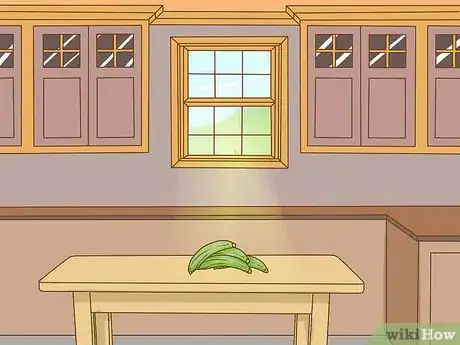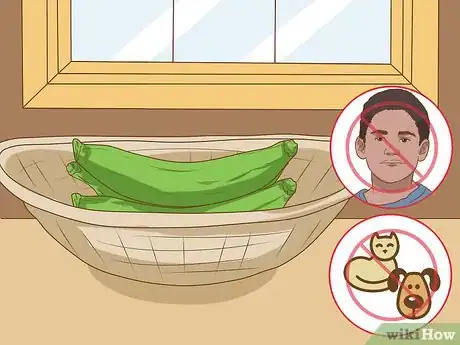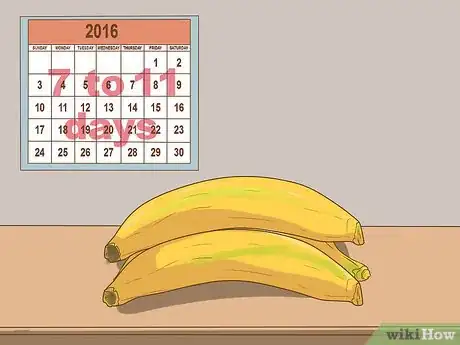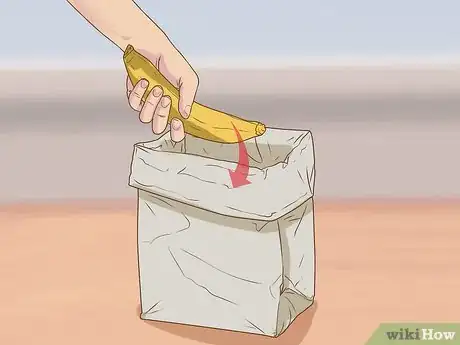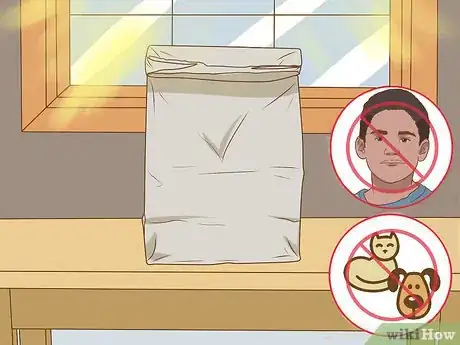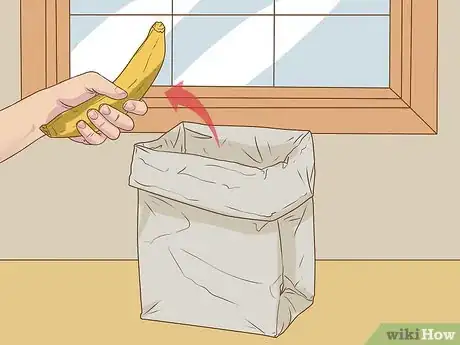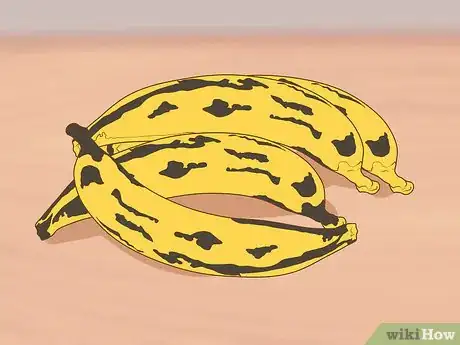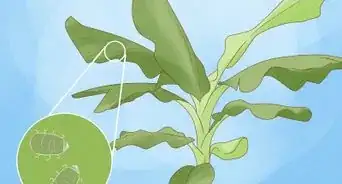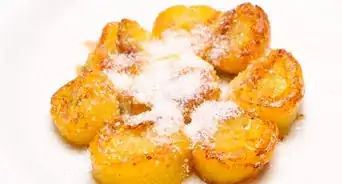This article was co-authored by wikiHow Staff. Our trained team of editors and researchers validate articles for accuracy and comprehensiveness. wikiHow's Content Management Team carefully monitors the work from our editorial staff to ensure that each article is backed by trusted research and meets our high quality standards.
wikiHow marks an article as reader-approved once it receives enough positive feedback. In this case, 87% of readers who voted found the article helpful, earning it our reader-approved status.
This article has been viewed 241,516 times.
Learn more...
Plantains are a part of the banana family and look similar in appearance, but compared to bananas, plantains are far starchier and contain less sugar. Plantains can be included in many recipes or eaten raw. Plantains can take longer to ripen than other fruit and it is difficult to find ripe plantains in the supermarket. You can let plantains sit out to ripen or speed up the process by ripening them in a paper bag.
Steps
Ripening a Plantain Naturally
-
1Choose the right environment to ripen your plantain. You can ripen plantains in your own kitchen. However, make sure you choose the right place to ripen your fruit.[1]
- Plantains ripen best in a warm and well-ventilated place. If your kitchen is very cold or stuffy, try to find another room in your house to ripen them.
- Plantains can ripen in cooler environments. It just may take longer.
-
2Allow your plantains to sit undisturbed. Plantains will ripen fastest if they're not bothered. Keep them out of reach of children and pets. Do not handle your plantains while they're ripening. Plantains are usually not sold ripe in the stores and take awhile to ripen on their own. Your plantains will need to sit undisturbed for awhile to get them adequately ripe.[2]Advertisement
-
3Give it enough time. It should take 7 to 11 days for a plantain to ripen. In a warmer environment, you can expect plantains to ripen faster. A plantain is ripe when it's black and wrinkled in appearance and soft to the touch. A plantain should not need to be poked too hard to yield to the pressure of your finger when it is ripe.[3]
Ripening Plantains in a Paper Bag
-
1Store plantains in a paper bag. If you need plantains to ripen quicker, you can store them in a paper bag. Place your plantains in a paper bag.[4] You do not need to close the bag all the way. In fact, it is best to only close the bag loosely.
-
2
-
3Check the plantains over the course of two weeks. Plantains generally take about two weeks to ripen. However, plantains may ripen quicker if they're in a paper bag. Check them frequently over the course of two weeks and remove them from the bag once they ripen.[7]
- Remember, ripe plantains are black and wrinkled in appearance and soft to the touch.[8]
Avoiding Common Mistakes
-
1Recognize when your plantain is ripe. Many people assume a plantain ripens the same way as a banana. While the fruits look similar, plantains look much different than bananas when ripe. While you can fry or bake plantains before they're completely ripe, if you intend to eat them raw you need to wait until they're ripe.[9]
- Plantains are mostly black when ripe with a few yellow streaks.
- Plantains that are completely black are still edible, but may be a little overripe.[10]
-
2Avoid refrigerating plantains. Plantains are best left unrefrigerated. This is especially true if they have not yet ripened. Refrain from refrigerating plantains until they're at your desired stage of ripeness.[11]
Community Q&A
-
QuestionCan I pan fry these after they are oven ripened?
 Community AnswerYes, you may fry them.
Community AnswerYes, you may fry them. -
QuestionWhy haven't they ripened after all these tips after a month?
 Community AnswerIn order to eat a plantain, you must place it in boiling water to soften. Plantains are not like bananas; they do not just ripen.
Community AnswerIn order to eat a plantain, you must place it in boiling water to soften. Plantains are not like bananas; they do not just ripen. -
QuestionCan plantain still undergo the ripening process after cutting it?
 Community AnswerYes, and cutting it will speed up the process, so be ready to use it within a couple days.
Community AnswerYes, and cutting it will speed up the process, so be ready to use it within a couple days.
Warnings
- Do not stack your plantains. You should lay plantains side by side instead of stacking them. Stacking plantains may increase the accumulation of mildew. For best results when ripening plantains, avoid stacking them together.[14]⧼thumbs_response⧽
References
- ↑ http://www.raw-food-health.net/RipenPlantains.html
- ↑ http://www.raw-food-health.net/RipenPlantains.html
- ↑ http://www.raw-food-health.net/RipenPlantains.html
- ↑ https://www.cooksillustrated.com/articles/3621-plantain-primer
- ↑ http://www.muchogusto.com/index.php?page=plantain
- ↑ http://www.raw-food-health.net/RipenPlantains.html
- ↑ http://www.muchogusto.com/index.php?page=plantain
- ↑ http://www.raw-food-health.net/RipenPlantains.html
- ↑ http://thepioneerwoman.com/food-and-friends/whats-the-deal-with-plantains/
- ↑ https://www.cooksillustrated.com/articles/3621-plantain-primer
- ↑ http://www.muchogusto.com/index.php?page=plantain
- ↑ http://www.raw-food-health.net/RipenPlantains.html
- ↑ http://www.gourmetsleuth.com/Articles/Ethnic-Unique-Foods-Ingredients-645/plantain.aspx
- ↑ http://www.raw-food-health.net/RipenPlantains.html
About This Article
To ripen a plantain naturally, place them in a warm, well-ventilated area. Make sure to keep them out of reach of children or pets that may move them, because they won’t ripen if they’re handled frequently. Wait 7-11 days after purchasing the plantains for them to ripen naturally. If they don’t ripen, try placing them in a paper bag and close the bag loosely. Check them often to see if the skin has become black and soft, which means they’re ripe. To learn more, such as what to avoid while storing your plantains, keep reading!
